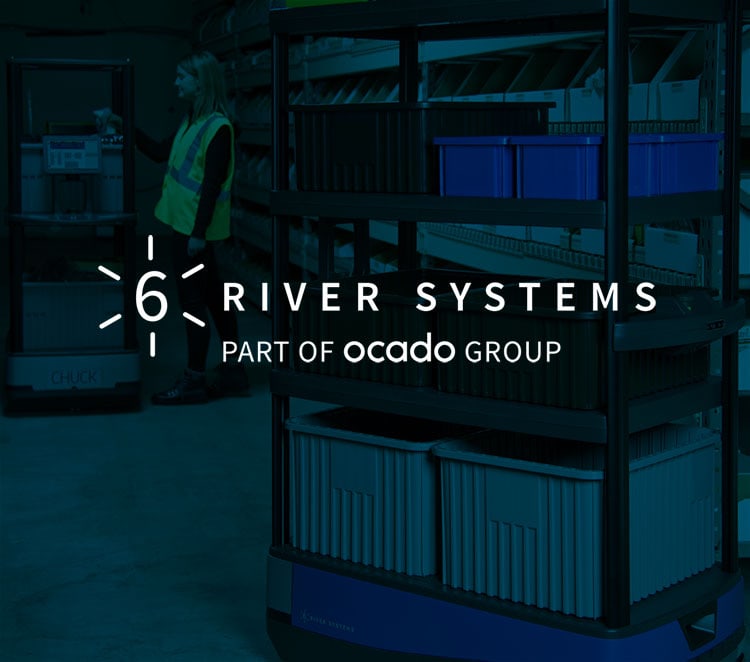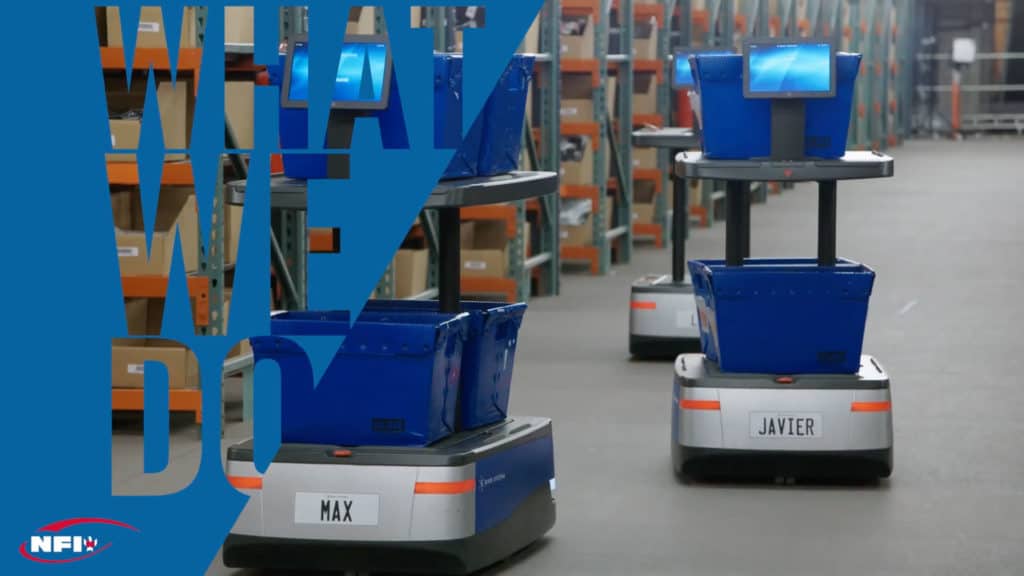Dr. Michael Porter, an economist, researcher and former Harvard Business School professor, wrote several books on competitive advantage that are taught widely across several disciplines in higher education today. Competitive advantage refers to the attributes that give an edge to a company, enabling it to outperform its competitors in the market. These attributes could help to reduce the cost of goods or services, make consumers choose a product over others or create barriers of entry for competitors.
Logistics is a key area that can help companies gain a significant competitive advantage. Today, a growing number of consumers are buying products online. E-commerce is growing at a rate close to 20% annually. Along with the COVID-19 pandemic, the growth in e-commerce has put enormous pressure on supply chain and warehouse operations. Today’s warehouses implement solutions such as collaborative mobile robots, automated picking solutions, warehouse analytics and warehouse management systems (WMS) to increase efficiency and accommodate demand. A “smart warehouse” gives companies substantial competitive advantages. Let’s take a look at the competitive advantages gained by shifting to a smart warehouse and the benefits of it.

1. Lower costs leading to lower prices
Labor costs comprise nearly two-thirds of warehouse operating costs on average, and average wages in the warehousing industry have been rising for more than a decade overall, with some recent dips possibly related to the increased labor availability resulting from the COVID-19 pandemic.
Smart warehouses reduce the demand on human labor and optimize the performance of human warehouse associates, which contributes to lower operating costs. These cost savings can translate to lower prices for goods and services for consumers. The price of products is a major attribute on which customers base their purchase decisions, and the ability to offer lower prices for equivalent products is a significant competitive advantage.
2. Faster shipping
In a traditional warehouse, order processing takes a disproportionate amount of time. Associates often spend significant time traveling on the warehouse floor to pick products and fill orders. In addition, picking errors cause further delays in processing, sorting and packing orders. It is estimated that the typical warehouse has a picking error rate between 1% and 3%.
Smart warehouse solutions can reduce picking error rates to near zero. Collaborative mobile robots and automated picking solutions reduce the time required to pick orders and eliminate the long walk for warehouse associates. These factors contribute to faster order shipping. Shipping time is an important buying consideration for e-commerce consumers, second only to the price of the product. Faster shipping is a valuable competitive advantage to have in this era of e-commerce prominence.
3. Fewer returns
As mentioned, a traditional warehouse experiences a picking error rate of 1% to 3%. No matter how experienced your employees are, manual picking processes are subject to human error, and picking errors are inevitable. Smart warehouses significantly reduce picking errors and help to reduce returns as a result.
Increased order accuracy in the warehouse leads to improved customer satisfaction and contributes to customer loyalty and repeat business. While some returns are still likely to occur, most returns will be for reasons other than order errors. Smart warehouses enable companies to process those returns at a faster rate compared to traditional warehouses.
Smart automation solutions like collaborative mobile robots can increase picking accuracy significantly. For example, Chuck by 6 River Systems offers a directed workflow, on-board scanner and put-to-light technology that enables associates to perform near-perfect work, saving one operator more than $80,000 in supervisor costs in year one while increasing customer satisfaction and retention. Increased order accuracy also reduces internal order auditing and rework costs.
4. Increased warehouse space utilization
Smart warehouses also can increase warehouse space utilization. Automated picking and mobile sorting solutions can allow for higher racks and narrower aisles because traffic and aisle congestion is reduced compared to traditional warehouses, increasing the amount of goods that can be stored in the same amount of space.
Increased warehouse space utilization helps reduce overhead costs per unit of goods sold. This cost savings can be translated to a lower price for end consumers or higher profit margins for the operator.
5. Predictive order processing
Smart warehouses make use of advanced analytics and artificial intelligence to gain more insights into the orders processed by the warehouse. Supply chain planning and order analytics can help in estimating future orders. This predictive capability can be utilized for optimizing warehouse operations and planning for spikes or reductions in demand. When warehouse layout, automated picking robots and employees are aligned with the predictive models, it results in faster order processing and shipping.
6. Customer satisfaction
Today, when customers often do not interact directly with products in a store, delivery, logistics and the larger supply chain infrastructure are pivotal in delivering customer satisfaction. All the benefits of a smart warehouse translate to satisfied customers. Faster shipping, lower prices and avoiding returns are all attributes every customer desires. Smart warehouses help to deliver on these consumer expectations and ensure customer satisfaction.
7. Warehouse optimization
Enterprise software, analytics tools and machine learning algorithms are widely accessible today. Smart warehouses leverage these technologies to power their operations. Perfection is an always-elusive goal and in warehouse operations, incremental improvement is much more advantageous. The tools and technology used in smart warehouses help to constantly identify the suboptimal operational components and workflows and provide insights that inform improvements.
Smart warehouse solutions such as advanced warehouse analytics enable warehouse operators to monitor key performance indicators (KPIs) and make data-driven decisions to improve those metrics. Constant warehouse optimization and improvement can be achieved by shifting to a smart warehouse.
With technologies more accessible today than ever before, it’s inevitable that warehouses of all sizes will eventually shift to a smart warehouse. Businesses that adopt these innovative technologies early can gain a substantial competitive smart warehouse advantage. Learn more about how smart warehouse technologies like collaborative mobile robotics can transform your fulfillment operation by downloading our white paper, The Business Case for Collaborative Mobile Robotics.



